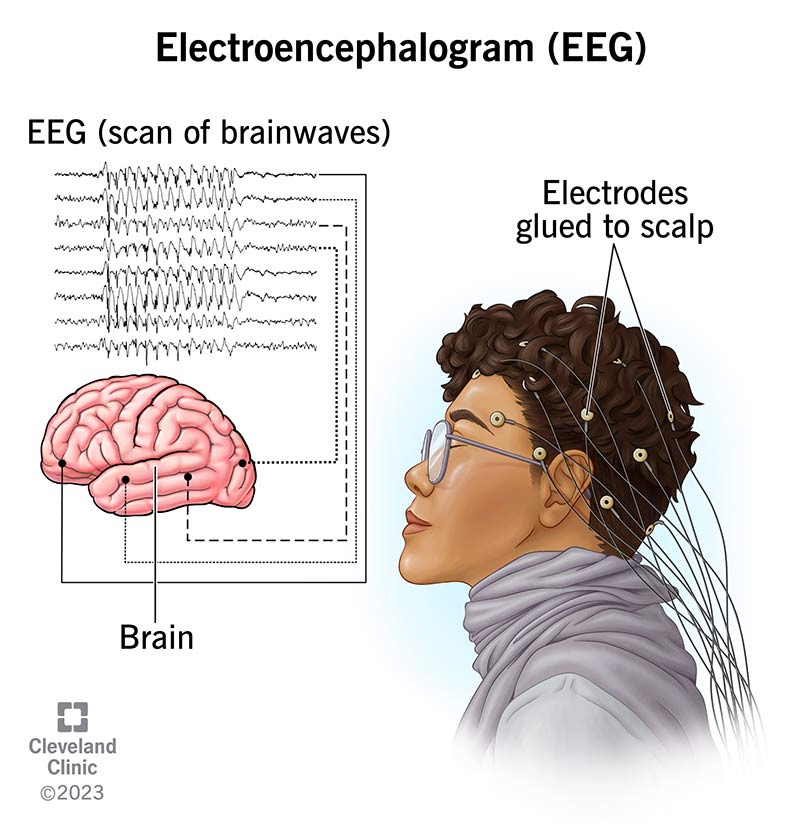Imagine waking up one day and realizing your forgetfulness isn’t just “getting older.” Instead, your brain is silently experiencing seizure-like activity—without you even knowing it. Shocking new research from UCLA Health has uncovered an alarming connection between seizures and Alzheimer’s disease, and the findings could change how we detect and treat cognitive decline.
The Hidden Epidemic of Silent Seizures in Alzheimer’s
When we think of seizures, dramatic convulsions often come to mind. But what if some seizures don’t look like seizures at all? Dr. Keith Vossel, a neurologist at UCLA, has spent years uncovering how Alzheimer’s patients experience silent epileptic activity—seizures happening deep in the brain, unnoticed by both patients and doctors. His latest study, published in Brain Communications, reveals that these undetectable seizures are far more common than we ever imagined—and they’re accelerating cognitive decline.
In previous research, Vossel discovered that more than 40% of Alzheimer’s patients experience these hidden seizures, in addition to the 20% who have noticeable ones. His findings have been groundbreaking, but this new study takes it a step further: it identifies a new, telltale sign of seizure activity in Alzheimer’s patients—high-frequency oscillations (HFOs).
The Brain’s Rhythms May Hold the Key to Alzheimer’s Progression
Vossel’s research team, including UCLA postdoctoral fellow Dr. M.C. Vishnu Shandilya and Dr. Richard Staba from the UCLA Epilepsy Center, found that Alzheimer’s patients exhibit HFOs at two to three times the rate of cognitively healthy individuals. These rapid bursts of electrical activity have long been associated with epilepsy, but this is the first time they’ve been examined in a neurodegenerative disease like Alzheimer’s.
The implications are huge. HFOs may serve as a biomarker—a warning signal that Alzheimer’s is progressing faster than expected. Even more importantly, they might provide a target for treatment.
Why This Matters: The Faster Alzheimer’s Decline, the Greater the Risk
Alzheimer’s already robs millions of their memories, independence, and dignity. But now, we know that for nearly half of these patients, silent epileptic activity may be making things even worse. Cognitive decline accelerates when these hidden seizures occur, worsening memory loss and problem-solving skills at an alarming rate.
The good news? There may be a way to slow it down.
A Simple 10-Minute Test Could Identify High-Risk Patients

Right now, identifying Alzheimer’s patients with epilepsy-like brain activity requires overnight EEG monitoring or an hour-long magnetoencephalography (MEG) scan. But thanks to this new study, there may be a much faster way.
MEG, which measures brain activity using magnetic fields, has proven superior to EEG in detecting these signals. Even better? A quick 10-minute MEG screening could be enough to detect HFOs and determine whether an Alzheimer’s patient is at a higher risk of epileptic activity.
“Encouragingly, MEG screening for HFOs takes just 10 minutes, offering a practical and efficient way to identify Alzheimer’s patients at higher risk of epileptic activity,” says Vossel.
This means that in the near future, doctors may be able to use a fast, noninvasive test to pinpoint which Alzheimer’s patients need additional monitoring or treatment to slow cognitive decline.
Could an Anti-Seizure Medication Be the Answer?
If hidden seizures are worsening Alzheimer’s, the next logical question is: Can stopping these seizures help?
Vossel’s past research suggests the answer is yes. In a previous clinical trial, Alzheimer’s patients with epileptic activity who were treated with low doses of the antiseizure medication levetiracetam showed significant cognitive improvements. They performed better in spatial memory tests and problem-solving tasks.
In this latest study, researchers found that HFOs coinciding with epileptic spikes were suppressed by levetiracetam. This means that by identifying Alzheimer’s patients with silent seizures, doctors may be able to intervene with medication early—potentially slowing down memory loss and improving brain function.
What This Means for Alzheimer’s Patients and Their Families
For millions of families navigating the challenges of Alzheimer’s, these findings offer a glimmer of hope. Silent seizures might be an overlooked factor driving cognitive decline, but they’re also an actionable target for treatment.
A 10-minute MEG test could help doctors identify high-risk patients early. With medications like levetiracetam showing promise, we might be on the verge of a new way to slow Alzheimer’s progression.
What You Can Do Right Now
If you or a loved one has been diagnosed with Alzheimer’s, here’s what this research means for you:
- Talk to your doctor about seizure monitoring – Many neurologists don’t routinely check for silent seizures in Alzheimer’s patients. Ask if an EEG or MEG scan might be appropriate.
- Be aware of subtle seizure symptoms – Not all seizures involve convulsions. Brief moments of confusion, staring spells, or sudden memory lapses could indicate seizure activity.
- Stay informed on clinical trials – Research on antiseizure medications for Alzheimer’s is ongoing. If you’re interested in participating, visit clinicaltrials.gov to find opportunities near you.
- Advocate for early screening – The sooner silent seizures are detected, the sooner doctors can intervene. Raising awareness of this issue could push healthcare providers to incorporate MEG scans into routine Alzheimer’s care.
The Future of Alzheimer’s Research: Hope on the Horizon
The connection between seizures and Alzheimer’s is still a new area of study, but it’s quickly gaining traction. Scientists like Vossel and his team at UCLA are at the forefront of uncovering how epilepsy-like activity impacts cognitive decline—and, more importantly, how to stop it.
This research marks an exciting shift in Alzheimer’s treatment. Instead of only managing symptoms, we may soon be able to slow the disease’s progression by targeting silent seizures. While there’s still much to learn, one thing is clear: detecting and treating these hidden brain disruptions could be a game-changer in the fight against Alzheimer’s.
For now, the key takeaway is this: If you or a loved one is battling Alzheimer’s, silent seizures may be a contributing factor—and now, we have the tools to detect and address them. The future of Alzheimer’s care may be closer than we think.

